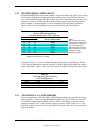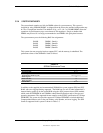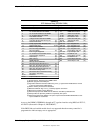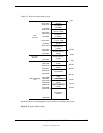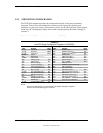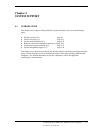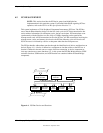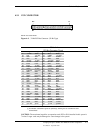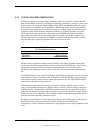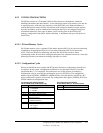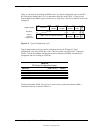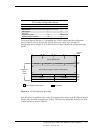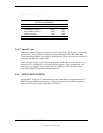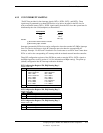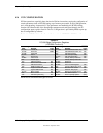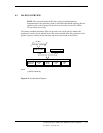
Chapter 4 System Support
Compaq Deskpro 4000N and 4000S Personal Computers
First Edition - September 1997
4-4
4.2.2 PCI BUS MASTER ARBITRATION
The PCI bus supports a bus master/target arbitration scheme. A bus master is a device that has
been granted control of the bus for the purpose of initiating a transaction. A target is a device that
is the recipient of a transaction. Request (REQ), Grant (GNT), and FRAME signals are used by
PCI bus masters for gaining access to the PCI bus. When a PCI device needs access to the PCI
bus (and does not already own it), the PCI device asserts it’s REQn signal to the PCI bus arbiter
(a function of the system controller component). If the bus is available, the arbiter asserts the
GNTn signal to the requesting device, which then asserts FRAME and conducts the address
phase of the transaction with a target. If the PCI device already owns the bus, a request is not
needed and the device can simply assert FRAME and conduct the transaction. Table 4-1 shows
the grant and request signals assignments for the devices on the PCI bus.
Table 4–2.
PCI Bus Mastering Devices
Table 4-2.
PCI Bus Mastering Devices
REQ/GNT Line Device
REQ1/GNT1 PCI Connector
REQ2/GNT2 Graphics Controller
REQ3/GNT3 Network I/F Controller
PCI bus control is granted according to a Least Recently Used (LRU) algorithm. During times
that the bus is not used or requested, bus control is given to the Host/PCI bridge. After a device
has given up control of the bus or has not executed a transaction for 16 PCI clock cycles
(PCICLKs) after gaining bus control, it loses access and is placed on the bottom of the priority
list.
The PCI/ISA bridge is given special consideration. If the PCI/ISA bridge gains control of the PCI
bus but does not execute a transaction after 16 PCICLKs, the PCI/ISA bridge retains ownership
of the PCI bus until the current ISA bus master relinquishes the ISA bus. The PCI/ISA bridge is
then placed on the bottom of the priority list.
PCI bus priority can be altered in two ways: by a master needing to perform a retry of a data
cycle, or by the master locking the bus. When a master is retried, it releases the bus and negates
its REQn- line for a minimum of two PCICLKs and then requests the bus again. If the master is
granted the bus before the condition that caused the retry is resolved, the master is retried again,
which may result in bus “thrashing.” Bus thrashing is minimized by masking the REQn- line of a
particular device that has had a transaction retried.
If a master locks the PCI bus, it retains top priority, allowing it to quickly finish a lock sequence.
The PCI/ISA bridge cannot become master until the locking device unlocks the bus.
Consequently, a master should not lock the bus for long periods of time or latency problems could
occur.



